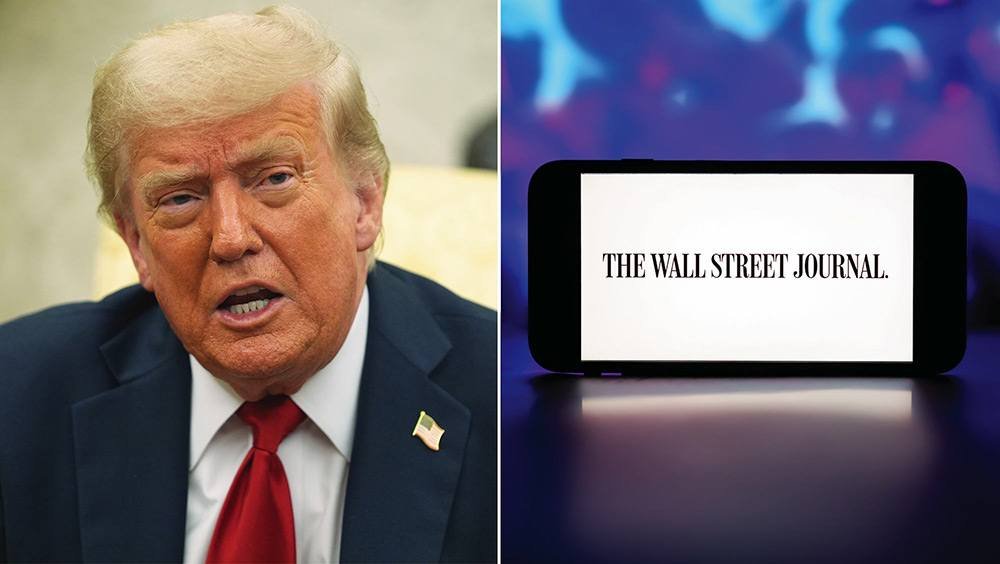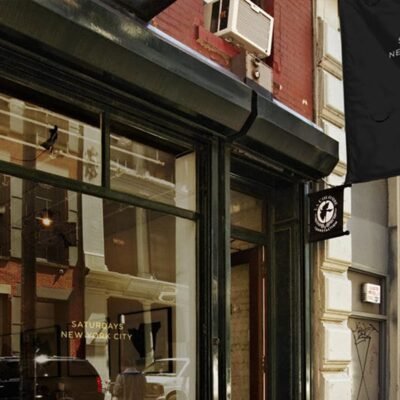First Amendment in Trump’s WSJ Lawsuit has become a major topic of debate in both legal and media circles. The case between Donald Trump and The Wall Street Journal raises serious questions about how far press freedom goes — especially when public figures are involved.
The First Amendment of the U.S. Constitution guarantees freedom of speech and freedom of the press. However, these rights are not without limits. In Trump’s lawsuit against the Wall Street Journal, both sides argue over how far the press can go when reporting on public figures—especially someone as prominent and controversial as a former President.
This article breaks down the case, explains the First Amendment issues involved, and what this legal battle could mean for the future of journalism and freedom of speech in America.
What Is the Lawsuit About?
In July 2025, Donald Trump filed a lawsuit against The Wall Street Journal (WSJ), claiming defamation. The lawsuit centers around an article published by the WSJ that discussed Trump’s financial dealings, including allegations of fraudulent business practices and misleading investors.
According to Trump, the article contains false and damaging statements that hurt his reputation and political ambitions. He argues that the WSJ intentionally published misleading information with malice.
The WSJ, however, stands by its reporting, stating that their journalists used verified sources and followed standard editorial practices. They are expected to argue that the article is protected under the First Amendment, which defends press freedom even when reporting on sensitive or controversial matters.
Understanding the First Amendment
Before we go deeper into the case, it’s important to understand what the First Amendment protects. Here’s what it says:
“Congress shall make no law… abridging the freedom of speech, or of the press.”
This means that individuals and the press can express opinions, share information, and report on news without fear of government punishment. However, this protection is not absolute. There are limits—especially when it comes to defamation, libel, and slander.
What Is Defamation?
Defamation is a false statement presented as a fact that harms a person’s reputation. It falls into two categories:
- Libel – written defamation
- Slander – spoken defamation
Since this case involves a newspaper article, the issue is one of libel.
To win a libel case, a public figure like Trump must prove:
- The statements were false
- The statements were published
- The statements caused harm
- The journalist or publication acted with “actual malice”
Let’s explore this last point further.
What Is “Actual Malice”?
The U.S. Supreme Court established the “actual malice” standard in the famous 1964 case New York Times Co. v. Sullivan. It means the publisher must have known the statement was false or acted with reckless disregard for the truth.
This high standard makes it difficult for public figures to win defamation lawsuits. The reasoning behind this is clear: the courts want to protect journalists who are doing their job, even if they make honest mistakes, as long as they are not intentionally spreading lies.
Trump’s legal team will need to prove that the WSJ knew the statements were false or had serious doubts about their truthfulness and published them anyway.
Why This Case Matters for the Press
The lawsuit is more than just a battle between Trump and a major newspaper. It’s about the boundaries of press freedom and whether a powerful figure can use the courts to intimidate journalists.
If Trump wins, it could open the door for more lawsuits from public officials or celebrities, possibly chilling investigative journalism. Newsrooms might become afraid to publish stories that hold powerful people accountable.
On the other hand, if the court rules in favor of the WSJ, it would reinforce the strong protection that journalists have under the First Amendment, especially when reporting on public figures.
What Are Trump’s Arguments?

Trump’s legal team claims:
- The WSJ article was filled with false statements.
- The information damaged Trump’s reputation and affected his political career.
- The publication acted irresponsibly and showed reckless disregard for the truth.
Trump has often called mainstream media “fake news” and has a history of attacking journalists. In this case, he hopes the court will agree that the WSJ crossed the line.
What Is the WSJ’s Defense?
The Wall Street Journal is expected to argue:
- The article was based on reliable sources and public records.
- The story covered a topic of public interest—Trump’s business practices.
- The paper did not act with actual malice and followed ethical journalism standards.
Their defense will rely heavily on First Amendment protections, especially given Trump’s public status.
Precedents That May Influence the Case
Several landmark cases are relevant here:
1. New York Times v. Sullivan (1964)
As mentioned earlier, this case established the “actual malice” standard, which is crucial for Trump’s lawsuit.
2. Hustler Magazine v. Falwell (1988)
This case showed that even offensive and controversial content about public figures is protected unless it includes knowingly false claims.
3. Sarah Palin v. New York Times (2022)
Palin lost her defamation lawsuit because she couldn’t prove actual malice, even though the Times admitted an error in an editorial.
These cases show that courts tend to favor the press unless there is clear evidence of intentional harm or reckless behavior.
Public Reaction and Political Implications
The case has drawn mixed reactions:
- Supporters of Trump argue that media outlets often target him unfairly and should be held accountable.
- Free speech advocates worry that lawsuits like this could silence the press and reduce transparency.
Politically, the lawsuit could also affect Trump’s standing in the 2024 presidential election if he chooses to run again. While his supporters may see the lawsuit as a sign of strength, critics may view it as an attempt to bully the media.
Could This Case Change Defamation Laws?
Some legal experts believe Trump’s goal may not just be to win the case, but to challenge the “actual malice” standard itself. In the past, he has openly criticized the protections offered by New York Times v. Sullivan and suggested that defamation laws should be revised to make it easier to sue journalists.
If the case reaches the Supreme Court, and if the court leans in Trump’s favor, it could potentially weaken First Amendment protections—a major shift in American law.
What Happens Next?
Here’s what to expect:
- Pretrial motions: The WSJ may try to get the case dismissed under First Amendment grounds.
- Discovery phase: Both sides exchange evidence and conduct interviews.
- Trial: If it goes forward, a jury will decide if the WSJ acted with actual malice.
- Appeals: The losing side could appeal, potentially taking the case to the U.S. Supreme Court.
This could take months—or even years—to resolve.
Final Thoughts
The Trump vs. WSJ lawsuit is more than just a defamation claim. It touches the core of what makes a free society work: the ability of the press to report on those in power without fear.
The First Amendment in Trump’s WSJ lawsuit will be tested, and the outcome could shape the future of journalism and public discourse in the United States.
While the courts will decide the legal issues, the public must also remain aware and engaged. A strong democracy depends not just on laws, but on the people who stand behind them.
Read Next – Donald Trump’s Planned Parenthood Cuts Blocked in Court






